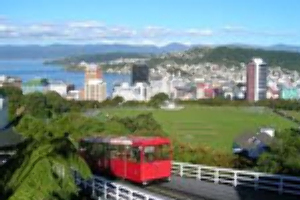Two cities drop out of the $1 million market
The Bay of Plenty and Wellington have tipped out of the $1 million house price club.
Tuesday, May 3rd 2022, 12:11PM  1 Comment
1 Comment
by Sally Lindsay

After several months of average asking prices sitting north of $1 million, prices dropped to $908,974 in Bay of Plenty and to $971,976 in Wellington last month.
Realestate.co.nz’s April Housing Report shows the tables are turning on the country’s hot property market. In March, Wellington tipped into a buyers' market, and during April Auckland followed the trendsetting capital.
Average asking prices in these two main centres have also been on a downward trajectory since February.
However, eight regions hit all-time asking price highs last month.
Tipping over the $1 million mark for the first time is Waikato, where the average asking price is up 41.2% compared to the same time last year.
Fifteen-year record average asking prices were also recorded in Gisborne, Hawke's Bay, Otago, Southland, Coromandel, Central Otago / Lakes District and Wairarapa.
Compared to March, however, average asking prices dropped in Northland, Auckland, Bay of Plenty, Taranaki, Wellington, Nelson and Bays, West Coast and Marlborough. Nationally and in Canterbury and Manawatu/Whanganui, prices remained steady.
Realestate.co.nz spokeswoman Vanessa Williams says the month-on-month drops in house prices could signal the beginning of market changes.
Inventory measures
After tipping into a buyers' market last month for the first time since June 2014, Wellington's buyers' market strengthened last month.
Auckland also became a buyers' market last month, according to seasonally adjusted inventory data from realestate.co.nz.
Inventory measures, theoretically, how long it would take to sell all stock at the existing rate of sale if no new listings came on to the market. An indicator of turnover, when inventory is higher than the 15-year long-term average, indicates properties are taking longer to sell in these regions than they have on average over the past 15 years since records began.
Williams says as Auckland and Wellington tend to lead property trends, it will be interesting to see whether buyers' markets emerge in other regions over the coming months.
In April, Hawke's Bay, Otago, and Manawatu/Whanganui also exhibited signs of moving into buyers' markets.
Williams says real estate agents are saying although there is still demand for property nationwide, things have slowed in many markets.
Property choice rises
Meanwhile, property for sale is up year-on-year by 70.8% nationally and in all regions, providing more choices for buyers.
Williams says while there is still plenty of demand from buyers, the heat has come out of the market. "We have become accustomed to urgency in the market with multi-offers and high competition being the norm
"Right now buyers have more time to do their due diligence and make an educated decision on their future property," she says.
Compared to last year, the biggest increase in houses for sale was in Manawatu/Whanganui where stock was up 174.8% year-on-year. Following close behind were Wellington (up 157.3% year-on-year) and Hawke's Bay (up 144.2% year-on-year).
Stock also more than doubled year-on-year in Central North Island (up 135.9%), Wairarapa (up 133.1%), Bay of Plenty (up 116.6%), Nelson & Bays (up 115.5%), Waikato (up 109.8%) and Otago (up 103.0%).
Williams says while this doesn't mean the end of our housing shortage woes, it gives buyers some breathing room:
"In a highly competitive market, for example when stock is low, buyers need to move quickly to secure property. These stock increases likely mean there is less of a rush for buyers to make decisions."
Having shifted into a buyers' market, Auckland’s stock levels lifted by 42.4% year-on-year, with 9,990 homes available for sale in the region during April.
| « House prices could tumble at the same time across the country | Auckland sales and prices plummet » |
Special Offers
Comments from our readers
Sign In to add your comment
| Printable version | Email to a friend |


